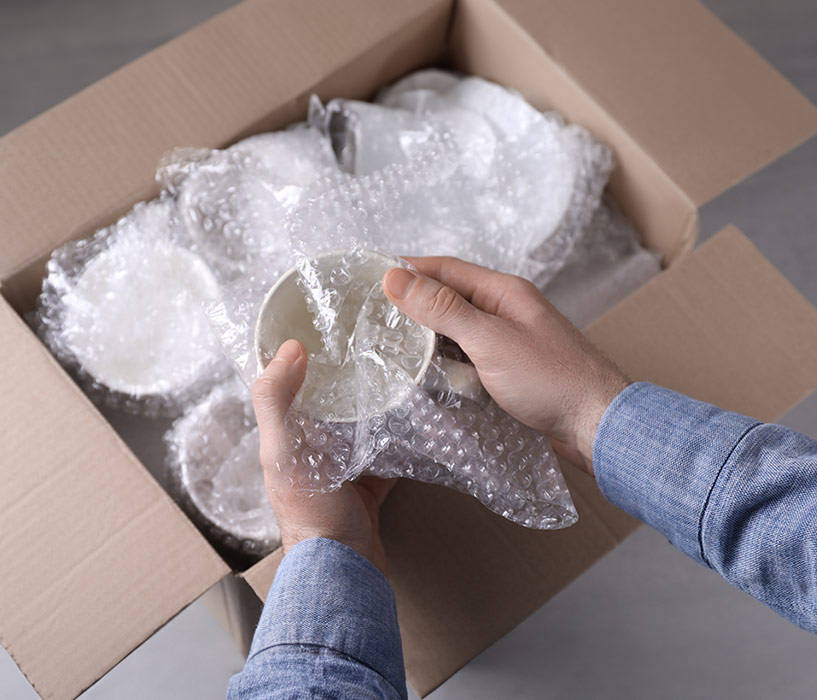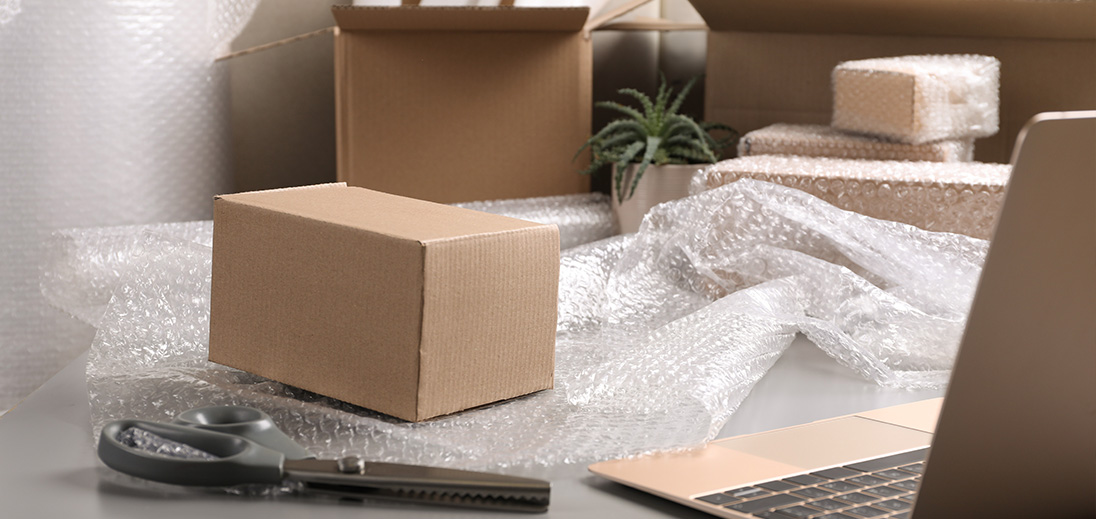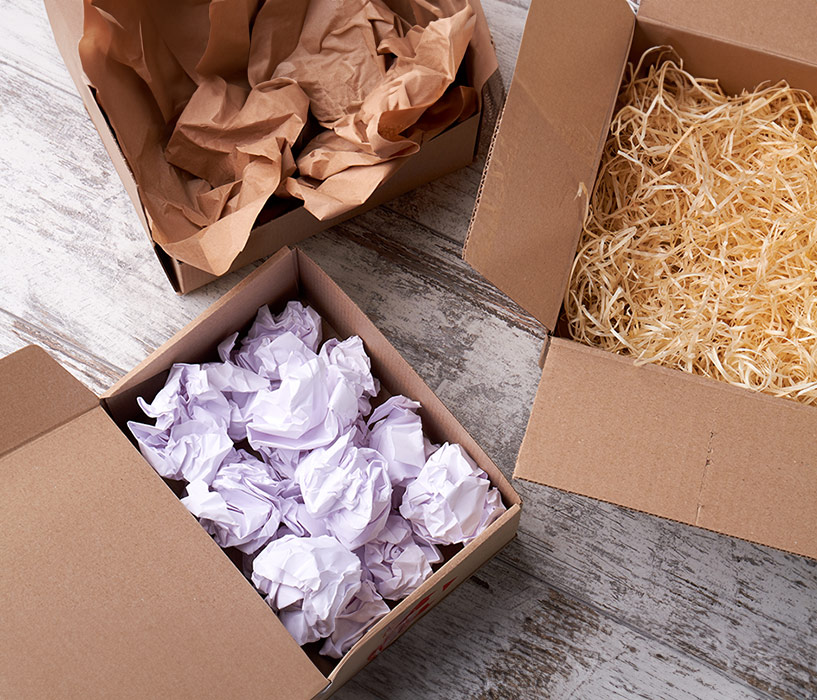Discover the best parcel packaging methods!
Packing parcels seems like a simple task - just put the product of your choice in the box, seal it and you're done. Well, all those who deal with this type of task on a daily basis know, however, how much can happen in between each of the steps mentioned here! So find out how to properly secure your parcels and avoid common mistakes in the process - here are the best parcel packaging methods!
Packing parcels seems like a simple task - just put the product of your choice in the box, seal it and you're done. Well, all those who deal with this type of task on a daily basis know, however, how much can happen in between each of the steps mentioned here! So find out how to properly secure your parcels and avoid common mistakes in the process - here are the best parcel packaging methods!
Packaging vs the item being shipped
First and foremost, it is important to emphasise that many factors influence the choice of a particular packaging - from the size of the parcel to how it is transported. Undoubtedly, however, the type of item being protected itself is crucial. In this context, it is particularly worth taking a conscious approach to the packaging of the following materials:
- Glass – products made of glass are the most fragile. Remember not to pack them together with other items. We pack the glass only with the glass and, if necessary, pack each element separately. All glass items should also always be adequately protected, i.e. wrapped in bubble wrap, packing foam or paper, to protect them against scratching. Also remember to add special fillers. Their role will be to cushion and protect the glass from being broken. In such cases, we recommend air mats, which, because of their light weight, will not increase your shipping logistics. To additionally immobilise the product to be shipped, you can also opt for the service of creating custom-made packaging. It involves the production of cartons with a dedicated slot for specific products. A solution that allows you to tailor the packaging perfectly to the items you are sending.
- Liquids should be shipped in tightly sealed, original containers. It is necessary to minimise the risk of opening or unsealing, which can result in the spillage of liquids. It is a good idea to wrap each such container in waterproof film or to use it when packing the entire box, use adhesive stretch film, which works particularly well fin such cases (importantly, no adhesives are actually used on the surface of the film, and the material itself, the production process and the resin used in its manufacture are responsible for the film's adhesion). Another good solution is also plastic bags with zipper closure, which will ensure the best separation possible between liquids and other shipped products;
- Electronics – such items should also be sent in their original packaging. It’s important to remember to wrap each item with the aforementioned bubble wrap (it's worth knowing that bubble wrap works best when placed with the bubbles facing the item being wrapped). Also,remember to use a suitable filler - the packing paper we offer, as well as air mats, will work well. Note: bubble wrap can cause a short circuit if the wires of the appliance in question are on the outside! This is why, for more advanced solutions, we recommend ESD anti-static products, which are available from Antalis on request.
Shipment safety is key
The examples of good practice described above emphasise one thing above all: the importance of safety issue. In the case of glass, this is quite clear, as it is easy to imagine opening a parcel only to take out a broken vase or bowl - nobody wants that! It is also important to avoid at all costs any spillage of the liquids being shipped, which can damage not just the packaging, but also other parcels shipped in the same batch.
So what tips can be considered the most important in this area? In terms of protective methods, we recommend remembering in particular:
 Fillers which cushion the items being shipped, prevent them from sliding and protect them from scratches;
Fillers which cushion the items being shipped, prevent them from sliding and protect them from scratches;
- Adequate protection against moisture, water and other liquids which applies not only to the aforementioned parcels which contain all sorts of liquid substances, but as a rule to all packages - after all, parcels can also be exposed to rain;
- The labeling of fragile items, especially glass or electronics. It is advisable to use stickers specially designed for this purpose, which will warn couriers to handle the item with extreme care;
- Make sure the size of boxes is adequate - if too small, they will be subject to excessive centrifugal stress, which significantly increases the risk of rupture and damage of the shipment. If they are too large, especially if appropriate fillers are not used, the selected goods will be exposed to damage caused by their free movement within the parcel. Furthermore, they may also collapse under the pressure of other parcels placed on top of them and thus upset the balance of the entire transport.
At Antalis, we carry out special drop tests to help us create even more resistant packaging. We test the strength of the carton by dropping it from various heights. In this way, we test both boxes of different sizes - whether they are secured with tape or glued. Thus, we are confident that our packaging can survive potential drops and impacts during transport.
Best packaging methods - what else should you know?
In our business, we encounter many doubts from customers on a daily basis. When it comes to the specific methods and materials we recommend when preparing shipments, we often face the following repeated questions:
- Is bubble wrap reusable?
Yes, bubble wrap is reusable and the data shows that, with proper care of its quality, it will safely last for up to a dozen years. In this respect, it meets one of the important prerequisites for an environmentally friendly approach to logistics. What is more, it is recyclable.
- Is it possible to change the height of a cardboard box?
Yes, the height of the cardboard box is a parameter that can be modified in many cases. This option is available for some of our flap boxes, such as the ones equipped with special additional creases - this type of profiling makes it easier to bend the texture later on and thus adjust the size of the respective packaging to your needs.
- How to glue my parcel together?
In our experience, the fundamental requirement is to seal the box at the joints, although we also recommend additional protection of all edges. They are the critical points of packaging that are most vulnerable to damage. Importantly, the packing tape should be adapted in width to the size of the package. The adhesive technique is also important, about which we wrote more in our article on paper packing tapes. When it comes to environmental issues, we wholeheartedly recommend paper tapes - they are perfect for recycling, leaving no residue on cardboard, yet effective and strong.








